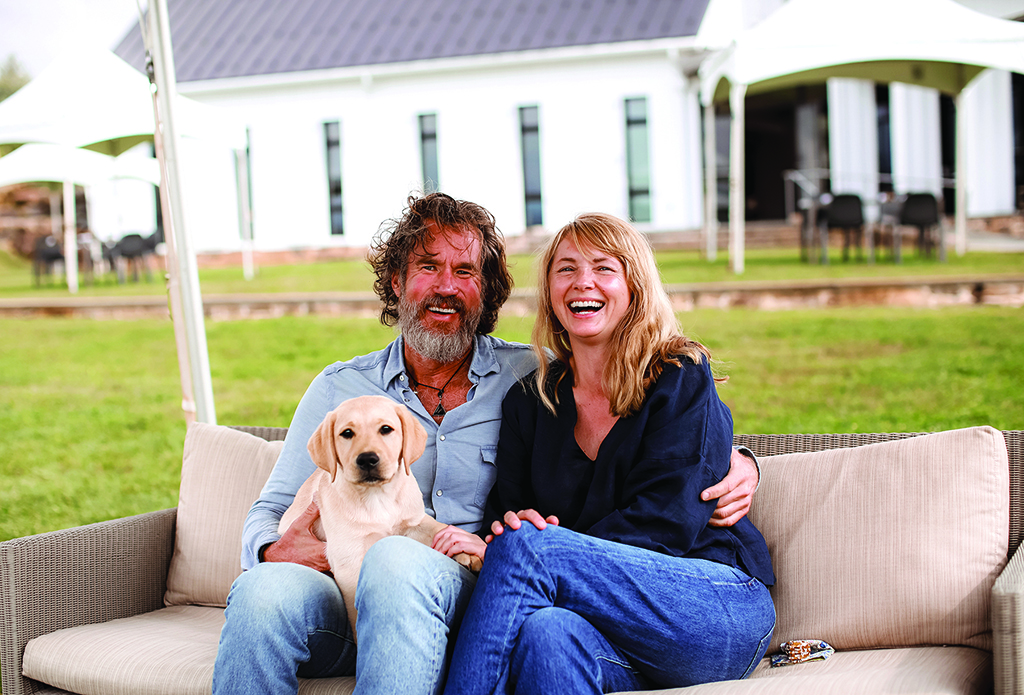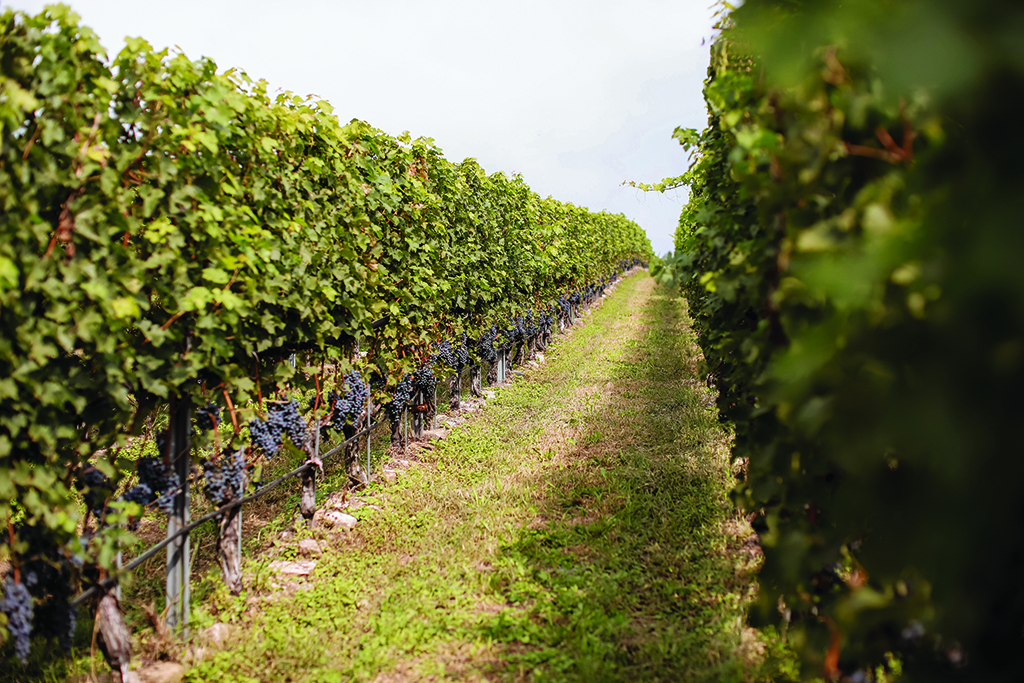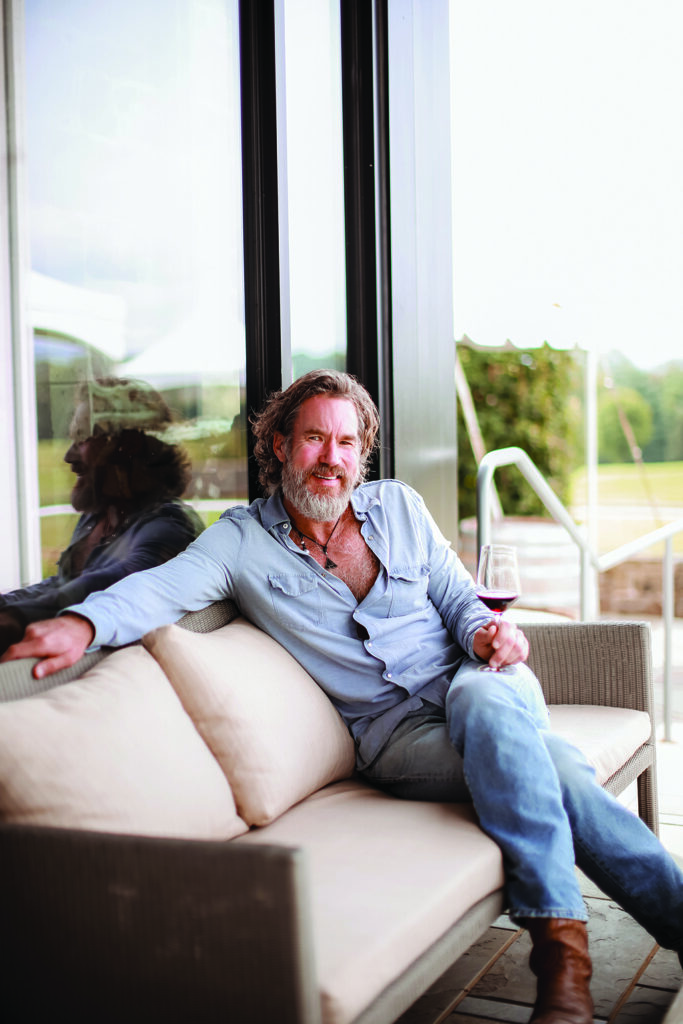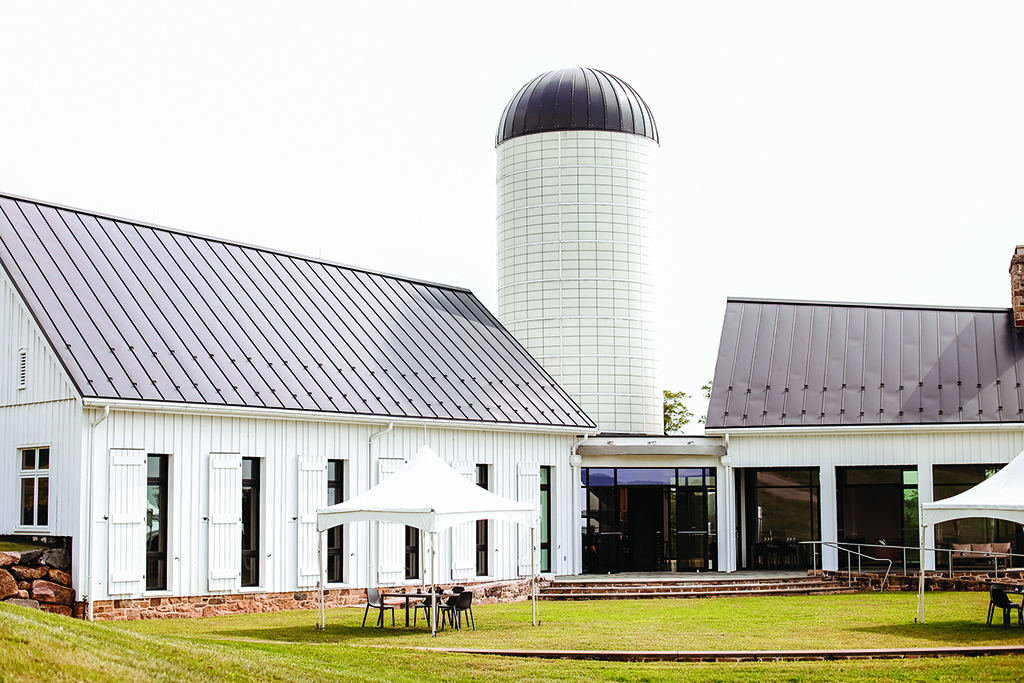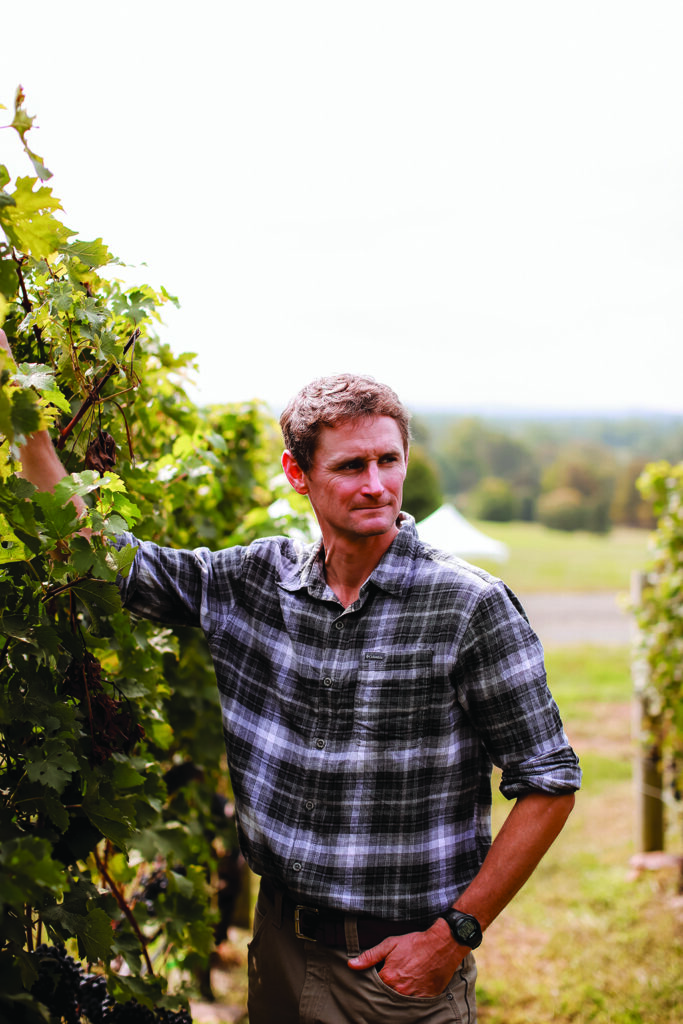Art, Science, and Soil
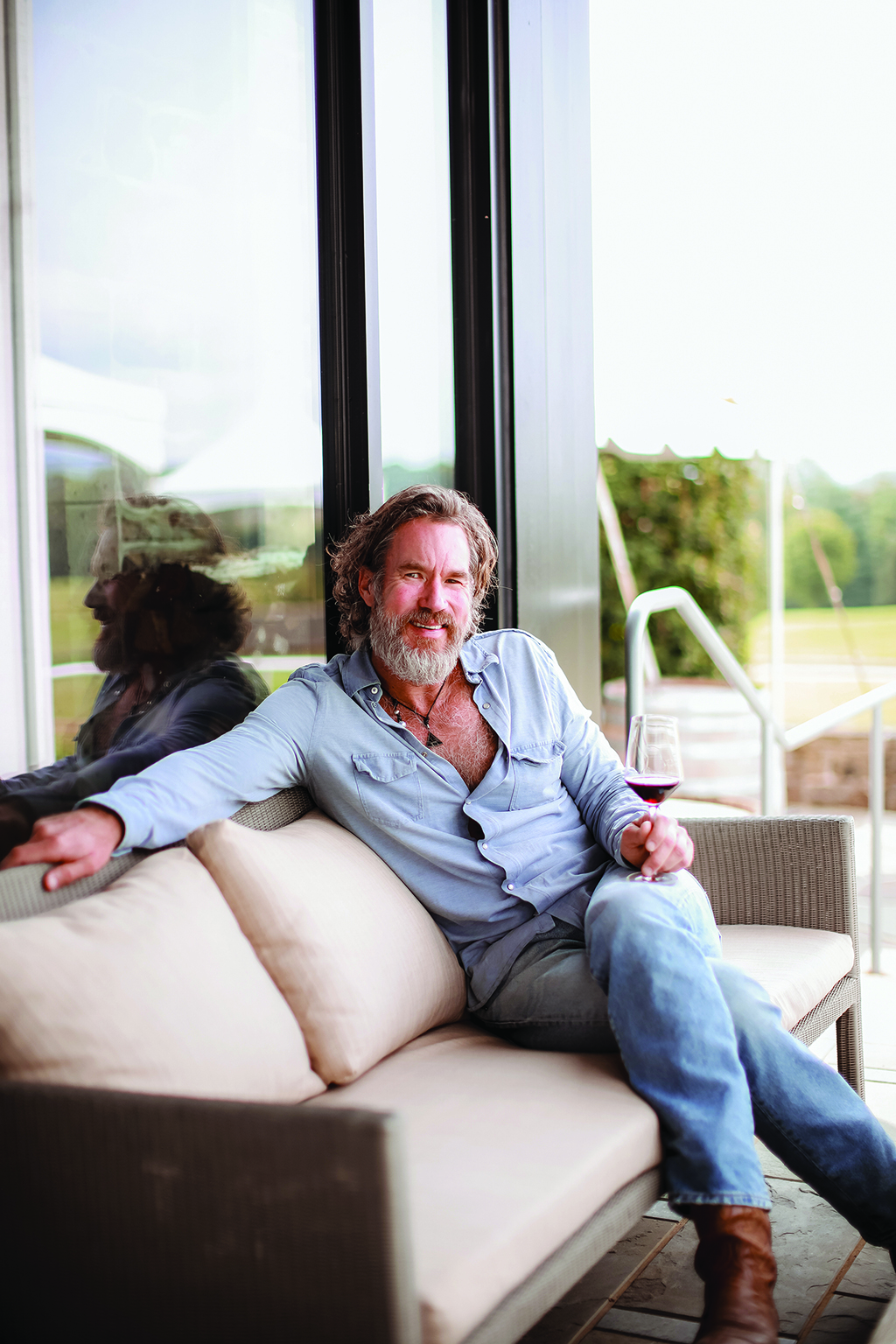
Behind the Wine with RdV Vineyards
Written by Kaitlin Hill | Photos by Jennifer Gray
For the team at RdV Vineyards, winemaking is the marriage of art and science, blending passion and expertise with the uniqueness of Virginia soil. As they prepare to release their 10th anniversary vintage this month, owner Rutger de Vink and winemaker Joshua Grainer share their story, the process behind their passion, and the things they are looking forward to over the next ten years.
“In 2000, I decided to change my lifestyle because of the whole big ‘the world is going to end’ thing,” de Vink says. “I wanted to work outside and work with my hands. I needed to find passion rather than a job. Life’s too short.”
The former Marine turned venture capitalist decided to explore options to escape the corporate world. “Wine was something I wanted to look into,” he says. “But instead of moving right away out to Napa – the epicenter of the wine world in America – I hired a consultant who worked in Napa and also France, but she lived in Warrenton. I asked [her] if you could make great wine in Virginia and we talked about the career change.”
Before making the leap, de Vink’s consultant recommended he get his feet wet with an apprenticeship. “She gave me Jim Law’s name at Linden … So, after pestering Jim for almost half a year, he finally agreed,” de Vink says.
In 2001, de Vink joined the Linden ranks. “It was love at first sight,” he says. “I think he hazed me by giving me the worst jobs outside in the vineyard, but every day I came back. I found my passion, and this is a way of life rather than a job.”
After Linden, de Vink travelled the wine world while looking for the perfect spot for his own operation. “I got a foundation and then I travelled,” he says. “I worked in Bordeaux and out in Napa, but I was always looking for what would be the right site. I wanted to make wine where good wine was being made, but also where I felt we could take it to the next level.”
Rutger de Vink and Jenny Marie with their puppy.
Though the West Coast tempted him, de Vink returned to Virginia and started digging. “There is something that is special about Virginia and I was actually living in Middleburg and driving to Linden on Delaplane Grade Road,” he says. “I was working with local soil scientists and we dug holes from Charlottesville to Leesburg.”
For de Vink, it would take a chance siting and suitable soil to help him decide where to settle. “I saw a sheep crossing the road right there,” he says, gesturing beyond the vines of RdV. “I stopped to talk to the farmer and as I looked around, I said, ‘Oh wow, there’s a hillside back there.’ It’s really just a 250-foot gain of elevation, but that makes a difference. I looked in the soil book from Fauquier County, and it said it was Chestnut and Tankerville soil series and it’s not suitable for agriculture, which means it’s really good for grapes.”
Once de Vink acquired the Delaplane hillside, he worked with Middleburg-based architect, Andy Lewis, to build RdV’s signature silhouette. “Rutger gave [Andy Lewis] pretty much free reign,” winemaker Joshua Grainer says. “He took him around and showed him a bunch of benchmark wineries, but asked that he design the aesthetic to fit into the Virginia countryside. It’s Rutger’s homage to farming. In Bordeaux, they have their chateaus with turrets. Here we have silos as the symbol of American agriculture,” he finishes, indicating the towering silo.
The silo is the center of the vineyard’s three wings, each built to serve a particular winemaking purpose. “We needed our fermentation ring,” Grainer says. “We needed our aging lane, which is the caves, and then our actual bottle preparation. Andy incorporated all of that and this has been a phenomenal building to work in.”
A visit to each wing provides good insight to the “science, art, and soil” balance of the winemaking process at RdV. Just outside the fermentation room, transparent tubes displaying rock samples hint at step one of the process: growing grapes.
“This is a good representation of what we are growing on, and soils are really important in all winemaking for quality, but especially in Virginia,” Grainer says. “It’s our shallowest core sample of rock down to our deepest. We have about 18-inches, pretty shallow of this rocky, gravely, loam on the hillside and then it hits that degraded granite rock. That’s important because if the grapevines are planted in a fertile valley, it’s super happy to grow and it will focus on all kinds of vegetative growth, green leaves and be happy. But if it starts to struggle, through lack of nutrients, lack of water, it will release an acid that will stop it growing and direct all the energy into ripening fruit. We love that little bit of struggle for the grapevines to get the high-quality wine.”
The team at RdV grows Bordeaux varieties. “They let us mitigate the risk a little bit,” de Vink says. “And, they’re good chameleons. They can grow in various different places and they can express the identity of that place. We didn’t say we were going to make a Bordeaux wine here or … a Napa Valley wine here. No, we are going to make a Virginia wine and it’s going to express this hillside. I think the grapes do that very well.”
RdV owner, Rutger de Vink.
Growth is followed by harvesting and processing the grapes. At RdV, this step is extremely detail oriented, down to the individual grape. “The whole cluster comes in and we take it through a series of sorting tables that vibrate with different grades,” Grainer says. “The first vibration they go across as a whole cluster shakes out flower or leaf fragments, and any bugs that might be hiding in the cluster. From there, it’ll go into a de-stemmer … and we pass them over another table which takes out underripe grapes. Then, we pass them through an optical sorter at the final stage. This takes a picture of every single, individual berry and it’s programed into a color spectrum which we set to measure ripeness and sugar levels, and [to] make sure it’s within the parameters we accept.”
After sorting, Grainer moves onto fermentation, which takes place in the cathedral-like fermentation wing lined with 12 stainless steel tanks and plenty of natural light from high windows. “We transport [the grapes] up to the top and we drop them in to the top of the tank,” he says.
Once in the tanks, maceration is an important step to extract everything each grape has to offer. “We want all the good stuff, so we macerate it: the skins, the seeds, everything together,” Grainer says. “At first it is this whole homogenous blend, and then as fermentation kicks-off, the yeast breaths out CO2 which saturates the wine and forces all the skins to the top. It is our job to extract all that from the wine. Over the next three weeks, we are monitoring the levels of extraction and we are doing that through temperature. We can heat or cool the extractions. Several times a day, during the initial stage of winemaking, we are pouring out the juice and pumping it right back over the top.”
RdV.
The process may sound exhausting, but it does have its rewards. “At the end we get to be very lazy and we’re simply tasting and tasting, until one day Rutger and I say, ‘This is now in its peak,’” Grainer says, laughing. However, de Vink and Grainer aren’t finished there. Tasting in itself involves a series of discussions and a consultation with a panel of Bordeaux experts.
“We’ve been making wine together for almost 15 years,” Grainer says. “We’re very much in line with what we know the goal is. Any disagreements are in minutia and that’s what keeps it interesting. We sit down like lawyers, and state our cases of the pros and cons. We’re working with a Bordeaux team of consultants. We’re also working with our oenologist. It can get kind of geeky, but it’s a marriage of science and art.”
The wine is put in oak barrels and moved from the airy fermentation space to the aging cave. Here the process of élevage, or “raising,” starts where the individual varieties develop before being blended and bottled. “We allow the wine to develop its personality … for about six months,” Grainer says. “We then start to evaluate them and see how they’ll blend together.”
Each spring, Grainer and de Vink reconnect with the consultants and make final decisions about how the wines will be blended into the vineyard’s three selections: “Lost Mountain,” “Rendezvous,” and the friends and family blend.
The wines are left again to develop even further. “For another year and a half, the wines will live as those blended wines continuing to age,” Grainer says. “The whole purpose of élevage is to take off all the edges and allow different components to integrate. The oak is also having an influence. It’s about allowing flavors to develop in the wine and building complexity.”
As the wine ages, there is a rigorous cleaning process called racking. “We’re cleaning the sediment out of the wine,” Grainer says. “Naturally it precipitates to the bottom … We transfer the clean wine off, wash out the barrels and put the clean wine back in. It’s a natural way of allowing the wine to clarify itself and get ready for the bottle.”
With all the care given from branch to bottle, de Vink is particular about the guest experience too. “When I first started, the tasting room wasn’t supposed to be a tasting room,” Grainer says. “Very naively, I thought we’d only have restaurateurs and wine buyers … but it is important to share the experience … so we revamped the way we think. We hired a team to put together the tasting room experience, but we still want to do things very intimately.”
RdV winemaker, Joshua Grainer.
During COVID-19, maintaining intimacy inspired “the pods” where small groups with reservations can sit outside and enjoy the spacious grounds and stunning views. “Especially during COVID, people have really enjoyed the experience of being able to escape lockdown,” de Vink says.
In addition to reservations, de Vink also offers the RdV experience through his popular wine club: the ambassador program. “What we found is the people who have been here, bought our wine, and listened to our story became kind of obsessed with what we are doing,” de Vink says. “They would end up bringing the wine they bought to chefs and restaurants. These people are really like our ambassadors.”
“For me, it’s fun in Virginia, especially, because every vintage brings a different story,” he says. “It’s fun to go back and talk about that, taste that, and believe that every year we’re going to make the best we can and an expression of that vintage and of that site.”
Wine club membership supports World Central Kitchen, a non-profit that feeds millions in need. This year alone, RdV has raised over $50,000 for the cause.
Beyond the vineyard’s visitors and wine club members, de Vink believes success is about giving Virginia’s wine the exposure it deserves. “For me, I used to think of Virginia as a challenge, but we’ve now erased that challenge … I keep pushing not just RdV wine, but the Virginia wine market also,” de Vink says. “We need to play at that high end. It sounds very conceited, but it’s the same with cuisine. With everything in that, if you play in the luxury market, everything falls into place.”
While RdV is certainly already there, de Vink and Grainer plan to keep refining their excellence in winemaking as they celebrate the release of their 10th anniversary vintage. “We are releasing our 10th anniversary vintage and we are still learning every year,” de Vink says.
“The cool thing about working here is there is always that question of ‘What can we do a little better?’” Grainer says. “For the grander scope, we want to take RdV to be recognized as a world-class wine, proudly representing Virginia. Virginia is on the map, but we plan to take it higher.” ML Learn more by visiting rdvvineyards.com.
Published in the October 2020 issue of Middleburg Life.


